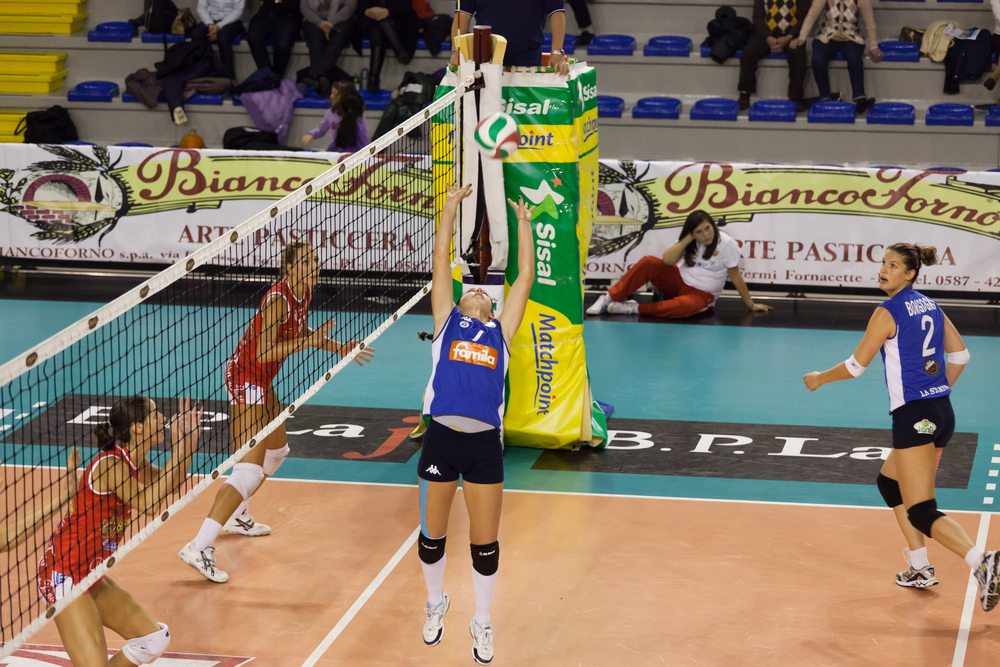Hitting and Blocking
Volleyball Slide Approach
Slide Footwork
The approach of the volleyball slide is a running motion. Run to the point of attack from slow to fast.
As the hitter leaves the ground, have the elbow bent in position to be quickly ready to attack.
It's important to stay behind the ball and drift to attack.
For the quick attack, the hitter is leaving the ground as the setter is releasing the ball.
When in the air, rotate the elbow high and throw the hand up to the ball.
- Right handed attacker jumps off the left foot.
- The best volleyball slide hitters are flying.
- They have the ability to go from a stand to a flying position very quickly.
Hitting a Quick Volleyball Slide
The attacker takes off the ground right next to the setter.
The setter should watch the left side blocker. The setter should set depending on where the left side blocker is positioned.
If the left side blocker is on the setter, then set the slide out near the antennae.
If the left side blocker is lined up further outside, then set a back quick tight to the net.
In this situation, the hitter is communicating to the setter. The setter must read the hitter's movement or listen to the hitter's call.

Blocking Tips: Close the split or leave the split open?
The outside blocker sets the block. The middle blocker has the responsibility to close the block.
Close the split or leave the split open?
If you don't think the attacker can overpower you, leave the split open and have the digger dig in the split.
Leave an alley?
This means you leave a bigger whole between the blockers and have 2 diggers between the blockers.
The goal here is to give the defenders an idea of where the ball is being funneled to.
Blocking Tips for Blocking the Volleyball Slide
Don't put up a block if the hitter can't hit the ball hard enough that you can't dig it.
Also, the blocker can't start half way. If the blocker tries to cheat half way, the blocker won't get there in time to block.
Sometimes a team runs a slide really fast and the block can't react fast enough to get in position to make a play. In this situation it's sometimes better to try and read or guess where the hitter is going.
Guessing is always better than being late.
Speed up the slide to beat the Block
The time it takes to go from a single-foot jump to hitting a slide is faster then when jumping off 2 feet.
So you can have a big advantage over the bloc by speeding up the slide and learning to hit slides really fast.
Have the hitter focus on hitting the ball when the ball is on the way up. Train to hit the ball before it reaches the peak.
Eye Tracking Blocking Drill: Ball on, off, or over?
The blockers need to be able to track the ball and judge where the ball is going. The better the ball is tracked, the better at anticipating the play.
Ball Sequence Drill
Have the coach toss the ball on, off, or over the net. Each player yells out where the ball is (on, off, or over).
Different things result depending on the situation.
For example...
- A ball that's passed off the net, the middle is out of the play.
- A ball that's overpassed needs to be hit.
- If the ball is passed up to the net, then something is going to happen with the setter.
The better the blocker is at reading the situation, the better the blocker is at getting in position to make a smart decision.
Blocker Penetrate the Net Video
Volleyball › Volleyball Drills › Volleyball Slide Hitting and Blocking Tips